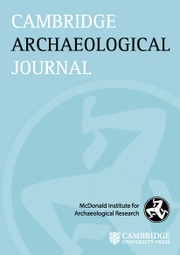Article contents
Intersecting Generations: Burying the Old in a Neolithic Hunter-fisher Community
Published online by Cambridge University Press: 22 April 2013
Abstract
This article explores the potential of studying the social dimensions of old age and aged bodies in the past. Because old age is relative to life-expectancy figures, diet and lifestyle, calendric years are avoided when defining old age. Instead a composite approach is advocated that includes, for example, traces of wear and joint diseases to identify a threshold between adulthood and a period of seniority. The approach is applied to the Middle Neolithic burial ground Ajvide on the island of Gotland in the Baltic Sea. Eleven individuals (six men, five women, or 18 per cent of the 62 analysed burials) are regarded as ‘aged bodies’. At Ajvide a majority of these individuals are buried in graves that overlap earlier burials containing younger individuals of the same sex. It is argued that this pattern is due to eschatological ideas of ‘generational merging’ of bodies. This practice changes over time, which is suggested to be a part of the overall hybridization processes at the site.
- Type
- Articles
- Information
- Copyright
- Copyright © The McDonald Institute for Archaeological Research 2013
- 5
- Cited by


